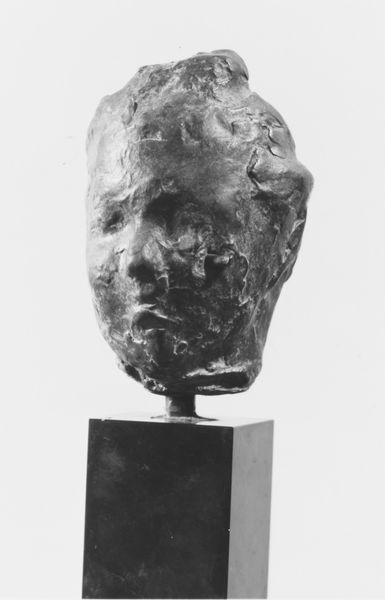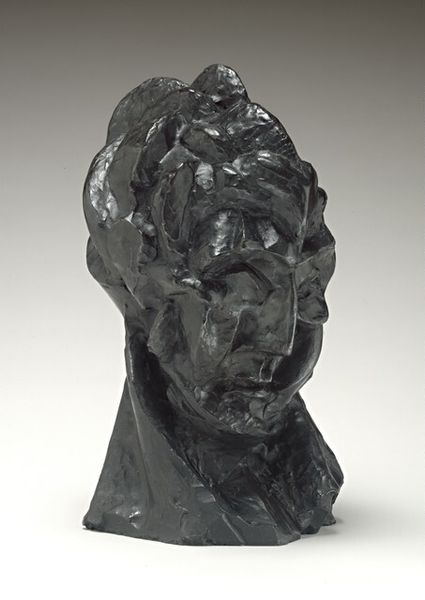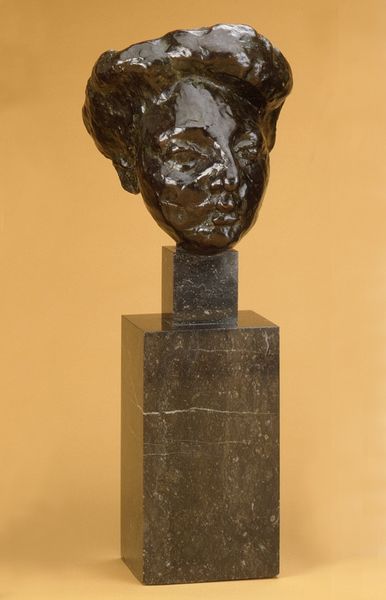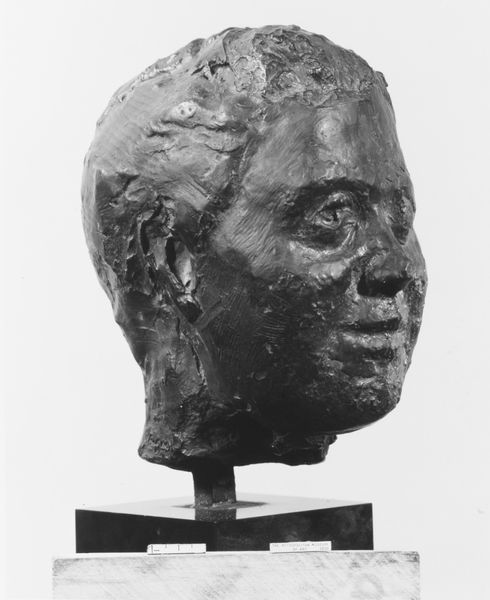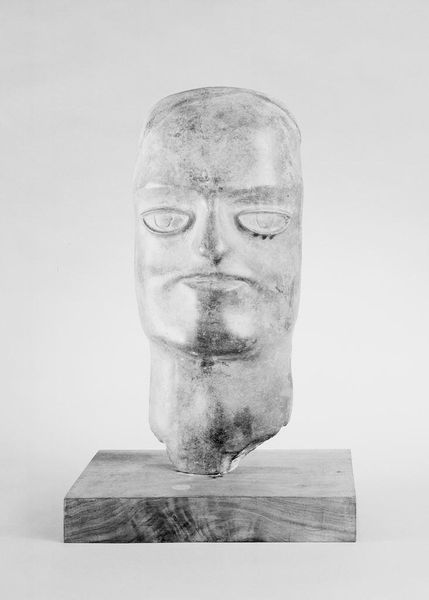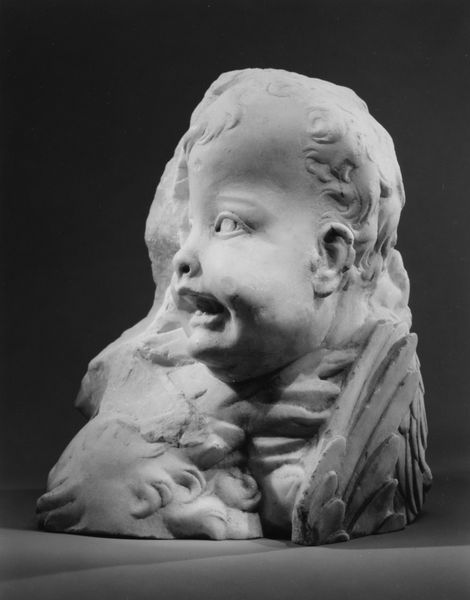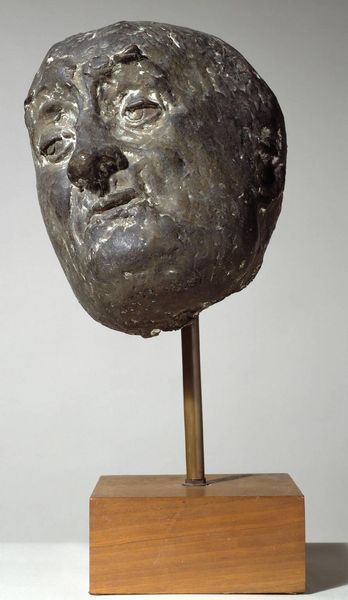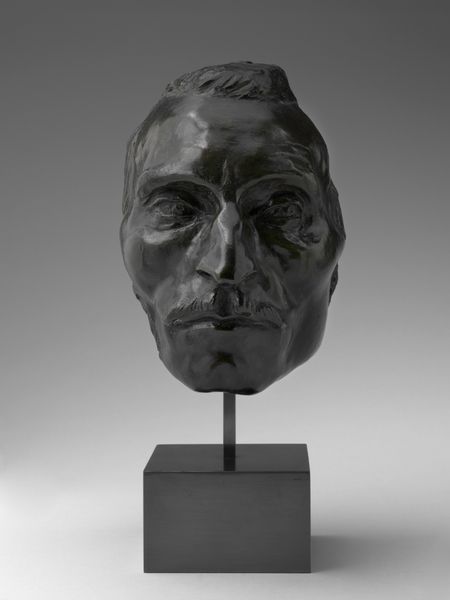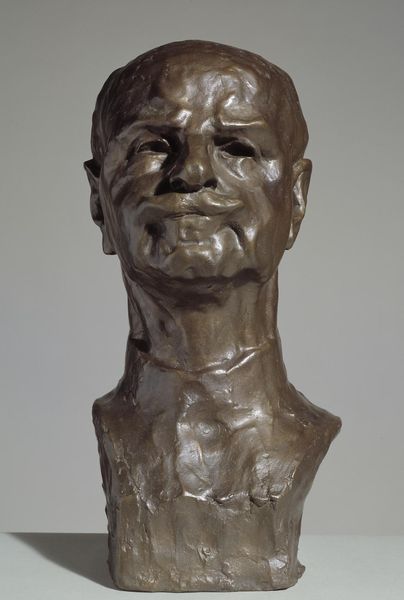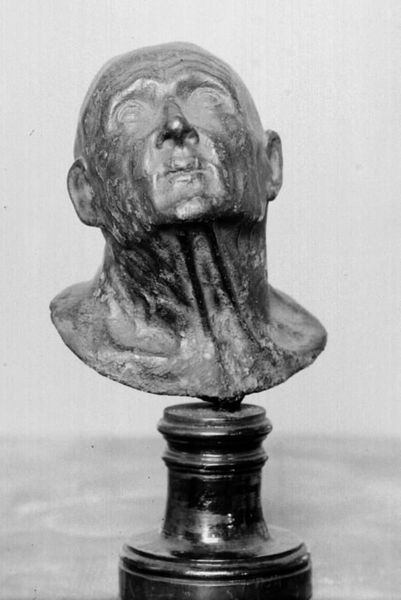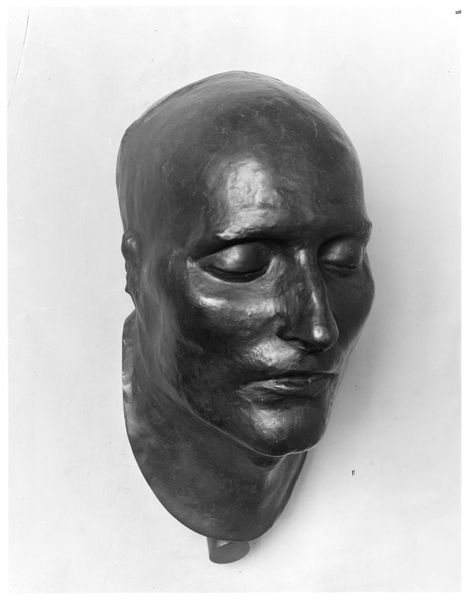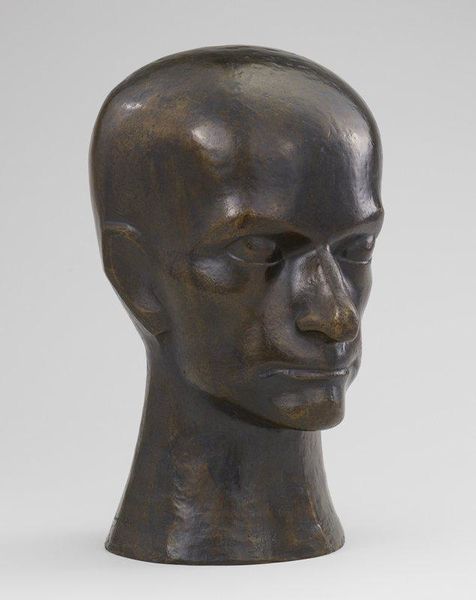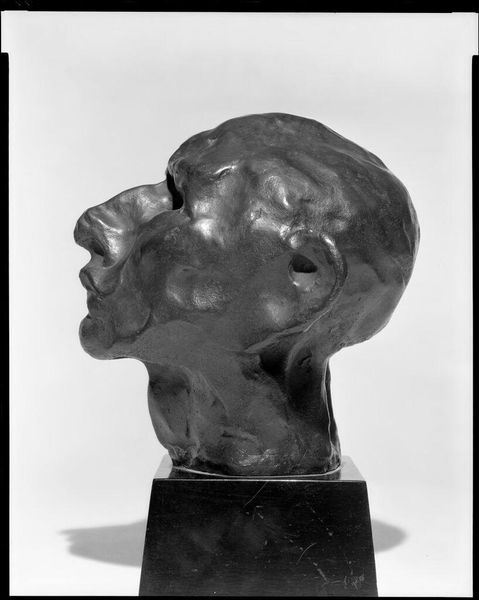
Dimensions: 22.4 × 23.7 × 27.5 cm (8 13/16 × 9 5/16 × 10 13/16 in.) Base height:3 1/2 in. (8.9 cm) Base width: 5 3/4 in. (14.6 cm)
Copyright: Public Domain
Editor: Here we have Rodin's bronze sculpture, "Sorrow," which he worked on from about 1882 to 1923. It's a pretty raw depiction of suffering; I notice the head is tilted back and the features seem really softened, almost collapsing. What do you see when you look at it? Curator: The formal aspects are compelling. The rough texture of the bronze, achieved through Rodin's distinct modeling technique, emphasizes the immediacy of the emotional state. Note how the light catches the uneven surfaces, creating a play of shadows that deepen the sense of anguish. Editor: It's interesting you focus on the texture first. I initially felt like it was trying to depict realistic anatomy, but maybe that isn't the right interpretation. Curator: The representation is certainly stylized, and the distortion of features enhances, not detracts from, the emotional intensity. Consider the gaze. The eyes are turned upwards as the partially open mouth indicates an arrested cry. Where does Rodin prioritize representational accuracy and where does he depart from it? What kind of aesthetic is he constructing through that decision? Editor: So it's more about conveying the *idea* of sorrow through these physical forms? I can see that. The angle of the head alone speaks volumes, almost as if the figure is succumbing to despair. Curator: Precisely. The semiotician Roland Barthes has said "Meaning is not half so important as being able to erode it." Can you tell me how Rodin accomplishes it? Editor: In this case, that eroding, comes from, like, focusing on shape and texture rather than like, perfect representation? Curator: I think this gets at Rodin's contribution and that is exactly the path by which it is discovered. By deconstructing those conventional symbols of beauty and strength, Rodin arrives at a much more compelling evocation of inner turmoil. Editor: That's fascinating, viewing it that way totally shifts how I understand the piece. I am going to read Barthes and your Formalist perspective gave me fresh eyes on "Sorrow." Curator: And your insights highlight how an initial emotional response can serve as a springboard for deeper analysis.
Comments
No comments
Be the first to comment and join the conversation on the ultimate creative platform.
